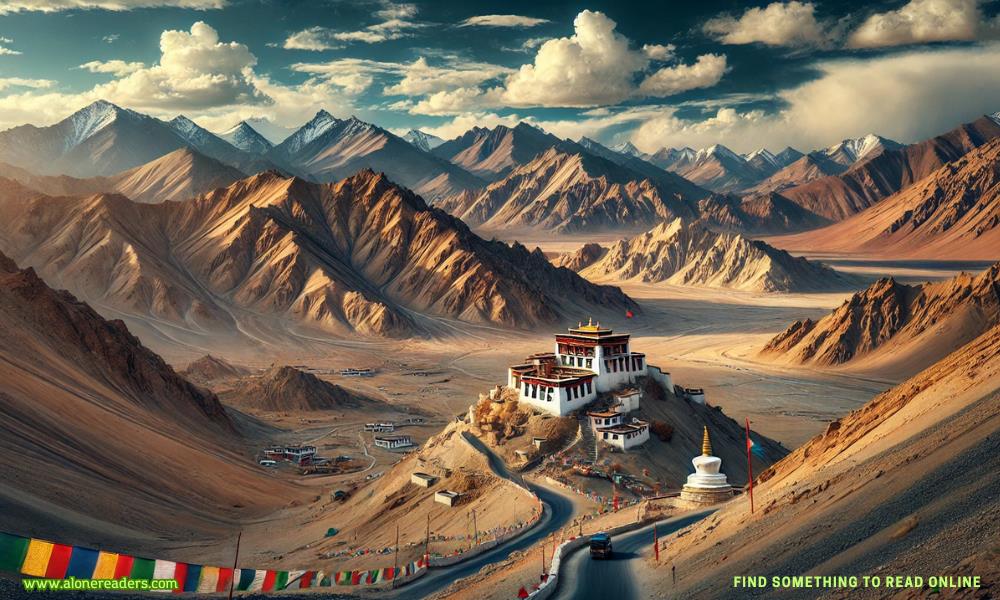
Nestled in the far north of India, between the towering Himalayas and the vast Karakoram range, lies Ladakh—often dubbed India’s own Moonland for its otherworldly landscape. With its stark, rugged terrain that mirrors lunar surfaces, crystal-clear skies, high-altitude lakes, and ancient monasteries perched on hillsides, Ladakh offers a travel experience unlike any other in the subcontinent. It’s not just a place, it’s a feeling—one that lingers in your soul long after you’ve left.
This high-altitude desert is not just about surreal landscapes but also about rich culture, warm-hearted people, spiritual stillness, and thrilling adventures. Here’s a complete guide for those planning a journey to Ladakh—covering the beauty, must-visit spots, how to reach, where to stay, what to eat, costs, and essential travel tips.
Why is Ladakh called Moonland?
Driving through Ladakh, especially near Lamayuru, you’ll come across terrain so strange and magical, it resembles the moon's surface—pale hills, craters, and ridges sculpted by winds over millennia. This terrain gives Ladakh the nickname Moonland of India.
Natural Attractions that Captivate Every Soul:
Ladakh is also home to an enduring Tibetan Buddhist culture.
You’ll also find prayer flags fluttering in the wind, stupas at almost every corner, and monks in crimson robes chanting peacefully—adding to the mystical aura of the region.
By Air:
The easiest and quickest way is to fly into Kushok Bakula Rimpochee Airport in Leh, which is well connected with Delhi and a few other major Indian cities. It takes about 1.5 hours from Delhi.
By Road:
If you prefer the thrill of a road trip, there are two main routes:
Ladakh offers a wide range of accommodations—from budget homestays to boutique hotels and luxury camps.
In Leh:
In Pangong and Nubra Valley:
Booking in advance is highly recommended during peak seasons (June to September).
Ladakhi cuisine is simple, warm, and comforting—ideal for the chilly weather.
Here are some must-try items:
Most local restaurants and cafes in Leh serve these dishes along with standard Indian and Tibetan fare.
| Category | Estimated Cost (₹) |
|---|---|
| Flights (Delhi–Leh) | 10,000 |
| Accommodation | 6,000 (budget) to 20,000 (luxury) |
| Food | 2,500 |
| Transport (local taxi/rental) | 5,000–8,000 |
| Entry fees, tips, misc. | 1,000–2,000 |
| Total (Approx.) | ₹24,500–₹42,500 |
Note: This is a rough guide and costs vary based on season, travel style, and booking method.
1. Acclimatization is Crucial:
Ladakh’s average altitude is over 11,000 feet. Altitude sickness is common. Spend the first 1–2 days in Leh resting and drinking water.
2. Carry Cash:
Many remote areas have no ATMs or digital payment options. Carry enough cash from Leh.
3. Restricted Areas:
Certain places like Pangong Tso and Tso Moriri may require Inner Line Permits (ILP) for Indian citizens and Protected Area Permits (PAP) for foreigners. These are easily obtainable in Leh.
4. Network and Connectivity:
Only postpaid SIMs (especially BSNL, Jio, or Airtel) work in Ladakh. Data is limited and many remote places have no signal.
5. Weather Caution:
Ladakh gets extremely cold at night, even in summer. Carry layered clothing, sunscreen, and sunglasses for UV protection.
6. Eco Responsibility:
Avoid plastic bottles and littering. Respect local customs and religious sites. Ladakh’s fragile ecosystem needs your care.
Conclusion
A journey to Ladakh is more than a vacation—it’s a soulful escape into nature’s rawest form and humanity’s gentlest expressions. From glacial lakes to moonlike valleys, from prayer flags dancing in the wind to conversations with monks under a starlit sky, every moment here feels sacred. It challenges your body, awakens your spirit, and leaves you humbled.
Whether you’re a solo adventurer, a couple seeking serenity, or a group of friends hungry for thrill—Ladakh is a destination that promises memories etched in stardust.
Pack wisely, breathe deeply, and embrace the Moonland of India.